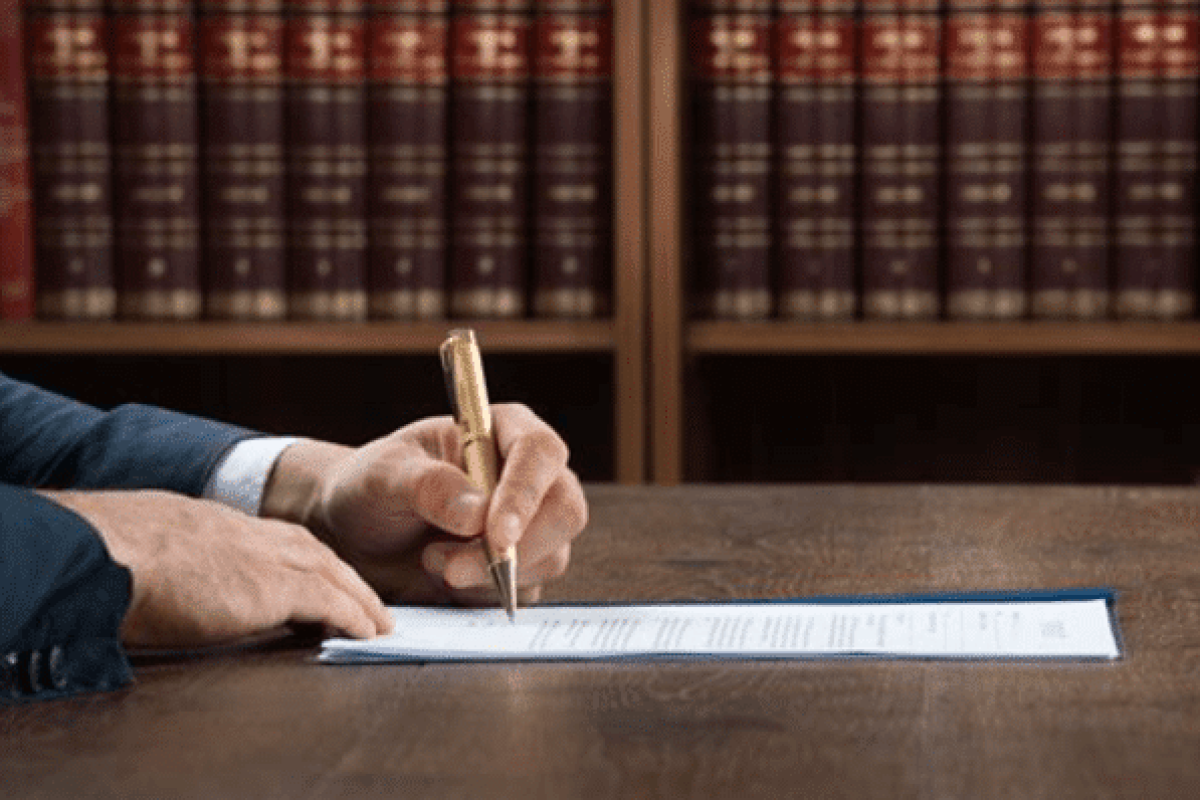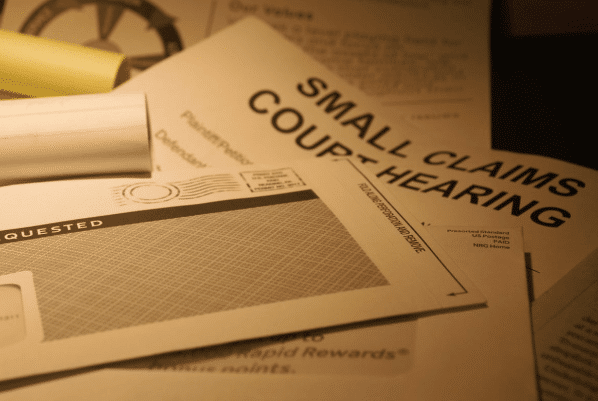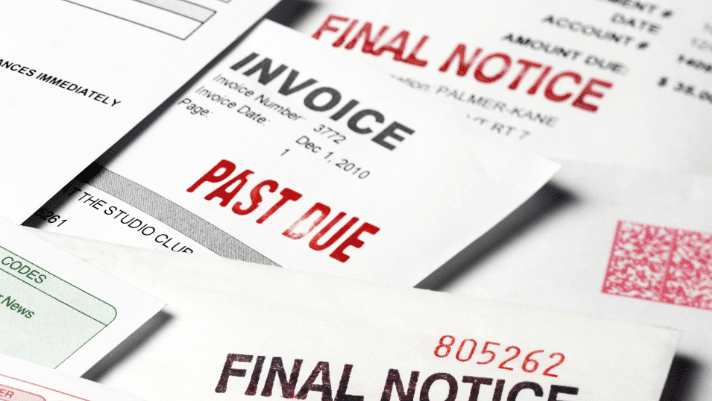In Missouri, you have a 30-day window to respond to a debt lawsuit. The recommended course of action is to file an Answer document with the court. Your Answer should cover each claim made against you and assert any affirmative defenses you may have. With ZumaZip, drafting and filing an Answer becomes a straightforward process, ensuring you can respond to the lawsuit efficiently and effectively.
Dealing with a debt lawsuit is undeniably daunting. The mere thought of responding to legal proceedings without the assistance of an attorney can feel overwhelming, especially when financial constraints make hiring legal help seem out of reach. If you’re already struggling to make ends meet, the added stress of a looming lawsuit can feel like an insurmountable burden, leading you to contemplate ignoring it in the hopes that it will magically disappear.
But it’s crucial to understand the plaintiff’s strategy behind filing the lawsuit. Whether it’s your original creditor or a third party that purchased your delinquent debt, they’re counting on your inaction. They know that if you fail to respond within the specified timeframe, the Court may issue a default judgment in their favor, granting them significant power to collect the debt through measures like wage garnishment or seizing tax refunds.
However, by responding promptly to the lawsuit, you have the opportunity to turn the tables in your favor. This proactive approach disrupts the plaintiff’s plans, forcing them to invest time and money in attending a hearing and incurring legal expenses they were hoping to avoid by intimidating you into non-response.
The silver lining is that the process of responding to a debt lawsuit is likely more manageable than you might think. This article aims to demystify the process and provide you with the guidance needed to answer a summons for debt collection in Missouri. From understanding the specific deadlines and required forms to navigating the legal landscape unique to Missouri, you’ll find valuable information here to empower you to confidently navigate the legal process and protect your rights. With knowledge and preparation, you can face the lawsuit head-on and ensure a fair outcome.
Table of Contents
- Deadlines
- Steps to Respond
- What is ZumaZip?
- Statute of Limitations in Missouri
- Missouri Legal Aid Organizations
- Key Takeaways
- Guides for Other States
Missouri Deadline for Answering a Debt Collection Summons
Under Missouri debt collection laws you have 30 days to file an Answer after being served with a Summons and Complaint. Let’s take a moment to define some terms that may be unfamiliar. The Summons and Complaint are the documents that start a lawsuit. The Complaint sets forth the allegations against you, such as you owing the debt and the amount of the debt.
These documents will be dated with the filing date stamped on the documents, as well as a dated certificate of service which states when you were served (either or in person or via mail) with the documents. This is the date that you need to start from when determining how long you have to respond.
There are a few important details to keep in mind here.
- These deadlines are strict and will be enforced by the Court.
- The clock begins as soon as you are served (officially receive notice of the lawsuit.)
- The 30 day response period includes days that the Court is not open, such as weekends or federal holidays. If the 30th day falls on a date that the Court is closed, you will have until the next business day to file your Answer.
Knowing all of this, however, we strongly recommend that you aim to submit your Answer (official response to the Complaint) well before the end of the 30 day time period.
Missouri Answer to Summons Forms
The ZumaZip Answer form is a quickly and easy way to draft a response in the proper format. You simply answer a few questions and we can translate your responses into the necessary legalese for the court documents. Additionally, we’ll have an attorney review and file the completed documents, so you can rest assured that all the details and deadlines have been followed properly.
The Missouri Court system also offers many forms on their website, but unfortunately, they do not have a specific blank template form for an Answer to a complaint. You can review a general sample answer for Missouri here. We will go over below what you need to put into your Answer and how it needs to be formatted for the Court.
Steps to Respond to a Debt Collection Case in Missouri
To initiate the lawsuit, the plaintiff will serve you with two documents either by mail or in person. These documents are called the Summons and Complaint. In Missouri, you have only 30 days to respond by filing an Answer. If you don’t respond within the 30 day period, you will automatically lose your case by default judgment.
Your Answer document should be properly formatted and contain legal language that appropriately pertains to the case. It should include the case information, such as your name and address, the name and address of the company suing you (also known as the plaintiff), the name and address of the attorney representing the plaintiff, the case number and other court information.
The good news here is that you don’t need to determine much, if any, of this information. You can use the Summons and Complaint as a guide because the plaintiff has already done most of the heavy lifting by determining the proper court jurisdiction and filing the initial paperwork. You will need to create a caption for your Answer that mirrors the one in the Summons and Complaint, listing all of the above information. Once you have created and formatted your Answer document the next steps will help you flesh out your Answer.
ZumaZip can also help you prepare your Answer document with all the necessary formatting and legal jargon. You can also follow these helpful steps to respond to your Missouri debt lawsuit:
- Answer each issue of the complaint
- Assert affirmative defenses
- File one copy of the Answer document with the court and serve the plaintiff with another copy.
Below, we’ll explore each step further.
1. Answer each issue of the Complaint.
ZumaZip makes it simple to respond to every paragraph.
Step two is where we get to your actual response, which is probably not as complicated as you may have thought. You simply need to read the complaint and then decide how you want to respond to each numbered paragraph. You can respond in one of three ways:
- Admit
- Deny
- Deny due to lack of knowledge
Choose one of these responses and write it into your Answer. List each answer with the number for the corresponding claim’s paragraph. There is no harm in answering “admit” for information that is true and accurate (such as your name or address.) It’s best to put “deny” for every paragraph in order to win your case. You may choose to do so as a strategy (more on this below) but as a general practice, it’s best to answer each individual numbered paragraph separately, and always truthfully.
This is exactly why the third response of “Deny due to lack of knowledge” exists. You may not know that the party suing you actually holds the debt, in which case it is absolutely proper to respond that you do not know. If that language feels odd to you it’s also fine to say that you lack enough information to respond. As you go through your Answer make sure that your numbered paragraphs properly correspond to the numbered paragraphs in the Complaint.
Alternatively, as we mentioned above, you might choose to respond the way many attorneys do by making a general denial. In a general denial, you deny everything in the Complaint which forces the burden of proof for everything onto the plaintiff’s side, creating more work for them.
2. Assert affirmative defenses.
Step three is where you can fight back by asserting your affirmative defenses. An affirmative defense is a reason why the plaintiff doesn’t have a case.
You can also add in any documentation you have as evidence of your position in your response. You’ll want to list any and all relevant affirmative defenses in your Answer.
Here are some of the more common defenses we see:
- The account with the debt is not your account. Maybe you’ve been confused for someone else with a similar name. Or what if you’re a victim of identity theft? Maybe you do hold an account with this creditor, but it could be that the wrong account number is listed, and you can easily prove that you are up-to-date on your payments through your regular statements. In the last scenario, make sure to attach the statements as evidence in your response.
- The debt has been paid or excused. In this set of circumstances, you don’t owe the creditor anything. Here again, however, it would be extremely helpful to attach any documentation showing that the account is paid in full or that you and the creditor agreed on a lower amount in full satisfaction of the debt.
- The plaintiff doesn’t actually own the debt. As mentioned earlier in this article, debt collection lawsuits are often brought by third-party debt collection agencies who purchased the then delinquent debt from the original creditor. That collection agency has to be able to prove that they actually hold the debt in question, and often they cannot provide a paper trail to show that fact.
- The debt may no longer exist if it was previously discharged in a bankruptcy proceeding. Those third party debt collection agencies mentioned above often don’t check to see if any debts were involved in a bankruptcy case. If it was included in your case and discharged then you no longer have any legal responsibility to pay it.
- The amount of debt is not correct. It could well be that you do owe a debt, one that started out as a reasonable amount that has grown into an impossible amount to handle through late fees and interest charges.
- The statute of limitations has expired. A statute of limitations is a law that sets a deadline for creditors to take legal action against you. Missouri debt collection statutes of limitations vary based on the type of debt at issue between three to ten years. We will examine the Missouri debt collection statute of limitations more below.
These are just a few of the many affirmative defenses. It’s important to note, however, that being unable to pay the debt is not normally a legal defense to the debt.
You also have the opportunity here to assert counterclaims, which refers to any wrong-doing by the party suing you under debt collection laws, like the Federal Fair Debt Collections Act. Unlike most states, Missouri does not have its own Missouri Fair Debt Collections Act but consumers are protected under the FDCPA. Learn more about debt collection laws in Missouri.
If the plaintiff violated any of the provisions in this act, such as harassment or unfair practices, it will be up to you to prove your counterclaims at trial, so be thoughtful about any that you list. Here as well you should attach any documents or evidence that supports your counterclaim. If you believe that you can prove your counterclaim(s) you may also need to fill out a “statement of damages” form stating how much money you believe is appropriate for your damages.
3. File the Answer with the court and serve the plaintiff.
After you’ve completed formatting and drafting your Answer, including all of your affirmative defenses and counterclaims you still have one more very important take to complete. All of your efforts so far will be for naught unless you properly file and serve your Answer.
Here’s what you need to do to file your answer.
- Print at least two copies of your Answer.
- Mail one copy to the court
- Mail the other copy to the plaintiff’s attorney.
We suggest printing at least one additional copy so that you have one for your own records and for use at your hearing. If you don’t have access to a printer at home or at work you can try the Missouri Public Library System or an office supply store for reasonable printing costs. You’ll be able to find the addresses for the Court and the plaintiff’s attorney on the Summons and Complaint you received in the mail.
What is ZumaZip?
ZumaZip is a comprehensive tool designed to assist individuals in navigating legal challenges associated with debt collection.
Our platform empowers users to effectively respond to debt lawsuits, correspond with collectors through formal letters, and explore options for debt settlement.
ZumaZip’s Answer service operates as a meticulously crafted web application, guiding users through a step-by-step process to compile accurate and comprehensive responses. Upon completion, our team of experienced attorneys meticulously reviews each document to ensure legal adequacy before filing it on behalf of the user.
With ZumaZip, individuals can confidently address debt-related legal matters with ease and precision, knowing that their responses are backed by professional expertise and thorough review.
Statute of Limitations on Debt in Missouri
As stated above, the Missouri statute of limitations varies based on the type of debt. However, most debts have a statute of limitations of ten years in Missouri, including credit card, medical, student loan, auto loan, and personal loan debts. For mortgage debt, the Missouri statute of limitations is twenty years.
This means that creditors and debt collectors only have ten years to sue you for a debt resulting from credit card use, loans, or medical bills, typically starting from the date of your last action on the account. They have 20 years to sue over a mortgage debt. Keeping this in mind is important, because if your debt is past the statute of limitations in Missouri, you can use it as a defense in your case to get the lawsuit dismissed.
You are responsible for bringing up the statute of limitations on debt. The judge won’t do the research for you.
The table below further outlines the statute of limitations on different types of debt in Missouri:
| Debt Type | Deadline |
|---|---|
| Credit Card | 10 years |
| Medical | 10 years |
| Student Loan | 10 years |
| Auto Loan | 10 years |
| Personal Loan | 10 years |
| Mortgage | 20 years |
| Judgment | 10 years |
| Mo. Rev. Stat. § 516.110, 516.150, and 516.350 |
These laws can lead to some fairly long collection time periods. For instance, if you were to ask what is the statute of limitations of debt collection for an electric bill in Missouri, the answer would be ten-years; this is because it stems from a written agreement. If you’re wondering why, in Missouri, there is a 10-year debt collection window, the answer is simply “that’s how it is.”
Missouri Legal Aid Organizations
All states have at least one government-funded organization that provides free legal services to people. Below please see a listing of various legal aid organizations in Missouri available to residents who cannot otherwise afford legal counsel.
- Missouri Legal Services
- Legal Aid of Western Missouri
- Legal Services of Eastern Missouri
- Legal Services for Southern Missouri
- Mid-Missouri Legal Services
Key Takeaways
So, in short, here’s the review on how to answer a summons for debt collection in Missouri
- The response deadline is 30 days.
- Use ZumaZip or draft an Answer according to our instructions above.
Follow these steps:
- Answer every issue in the complaint.
- Assert your affirmative defenses and counterclaims, if any.
- File and serve the Answer on both the Court and the plaintiff’s attorney.
What is ZumaZip?
ZumaZip is a convenient solution designed to streamline your response to a debt collection lawsuit. Here’s a breakdown of what you can expect when you use ZumaZip:
Firstly, you’ll access our user-friendly web application, which guides you through the process step by step. You’ll be prompted to answer a series of questions related to your specific situation. Once you’ve completed the questionnaire, you have the option to either print out the finalized forms and mail them to the appropriate courts yourself, or you can opt to utilize ZumaZip’s services to file them on your behalf. Additionally, if you choose this option, an attorney will review your document for added peace of mind.
If you’re seeking guidance on how to effectively respond to a debt collection lawsuit, ZumaZip can provide the assistance you need. Feel free to explore our FAQs for more information on what ZumaZip has to offer.
What if I haven’t been sued yet?
If you’ve only received a collections notice, but not a lawsuit, the best way to respond is with a Debt Validation Letter. When a debt collector contacts you in any way, whether it’s by phone or mail, you can respond by formally requesting a debt validation with a Debt Validation Letter . This letter notifies the collector that you dispute the debt and forces them to provide proof you owe the debt. They can’t call you or continue collecting until they provide validation of the debt. This flowchart shows how you can use a Debt Validation Letter to win.
Get started with a Debt Validation Letter here.
How to Answer a Summons for debt collection in all 50 states
Here’s a list of guides on how to respond to a debt collection lawsuit in each state:
- Alabama
- Alaska
- Arizona
- Arkansas
- California
- Colorado
- Connecticut
- Delaware
- Florida
- Georgia
- Hawaii
- Idaho
- Illinois
- Indiana
- Iowa
- Kansas
- Kentucky
- Louisiana
- Maine
- Maryland
- Massachusetts
- Michigan
- Minnesota
- Mississippi
- Missouri
- Montana
- Nebraska
- Nevada
- New Hampshire
- New Jersey
- New Mexico
- New York
- North Carolina
- North Dakota
- Ohio
- Oklahoma
- Oregon
- Pennsylvania
- Rhode Island
- South Carolina
- South Dakota
- Tennessee
- Texas
- Utah
- Vermont; Vermont (Small Claims court)
- Virginia
- Washington
- West Virginia
- Wisconsin
- Wyoming
Guides on how to beat every debt collector
Hey there! Facing off against a debt collector can feel like a daunting challenge, but fear not! We’re here to help you navigate through it all with our handy guides designed to assist you in beating every debt collector you encounter. Whether you’re facing a new lawsuit or dealing with a persistent collector, we’ve got your back. Stay positive, stay informed, and let’s tackle this together!
- Absolute Resolutions Investments LLC
- Accredited Collection Services
- Alliance One
- Amcol Clmbia
- American Recovery Service
- Asset Acceptance LLC
- Asset Recovery Solutions
- Associated Credit Services
- Autovest LLC
- Cach LLC
- Cavalry SPV I LLC
- Cerastes LLC
- Colinfobur
- Covington Credit
- Crown Asset Management
- CTC Debt Collector
- Cypress Financial Recoveries
- Delanor Kemper & Associates
- Eagle Loan of Ohio
- Educap
- Estate Information Services
- FIA Card Services
- Forster & Garbus
- Freshview Solutions
- Fulton Friedman & Gullace LLP
- Harvest Credit Management
- Howard Lee Schiff
- Hudson & Keyse LLC
- Integras Capital Recovery LLC
- Javitch Block
- Jefferson Capital Systems LLC
- LVNV Funding
- Mannbracken
- Mariner Finance
- Medicredit
- Michael J Adams PC
- Michael J Scott
- Midland Funding LLC
- Mullooly, Jeffrey, Rooney & Flynn
- Mountain Land Collections
- MRS Associates
- National Collegiate Trust
- Nationstar Foreclosure
- Northstar Capital Acquisition
- NCEP LLC
- NRC Collection Agency
- OneMain Financial
- Palisades Collection LLC
- Pallida LLC
- Paragon Revenue Group
- Pinnacle Collections Agency
- PMAB LLC
- Portfolio Recovery Associates
- Provest Law
- PYOD LLC
- Reunion Student Loan Finance Corporation
- Revenue Group
- Regents and Associates
- RSIEH
- Salander Enterprises LLC
- Second Round Sub LLC
- Security Credit Services
- Sherman Financial Group
- Suttell and Hammer
- T-Mobile
- Transworld Systems
- Tulsa Teachers Credit Union
- UCB Collection
- Velo Law Office
- Velocity Investments
- Waypoint Resource Group
- Weinberg and Associates
- Wolpoff & Abramson
Settle your medical debt
Having a health challenge is stressful, but dealing medical debt on top of it is overwhelming. Here are some resources on how to manage medical debt.
- Am I Responsible for My Spouse’s Medical Debt?
- Do I Need a Lawyer for Medical Bills?
- Do I Need a Lawyer to Fight Medical Bill Debt?
- Does Bankruptcy Clear Medical Debt?
- How Much Do Collection Agencies Pay for Medical Debt?
- How to Find Medical Debt Forgiveness Programs
- Is There a Statute of Limitations on Medical Bills?
- Medical Debt Statute of Limitations by State
- Summoned to Court for Medical Bills — What Do I Do?
- Summoned to Court for Medical Bills? What to Do Next
Stop calls from Debt Collectors
Do you keep getting calls from an unknown number, only to realize that it’s a debt collector on the other line? If you’ve been called by any of the following numbers, chances are you have collectors coming after you, and we’ll tell you how to stop them.



































